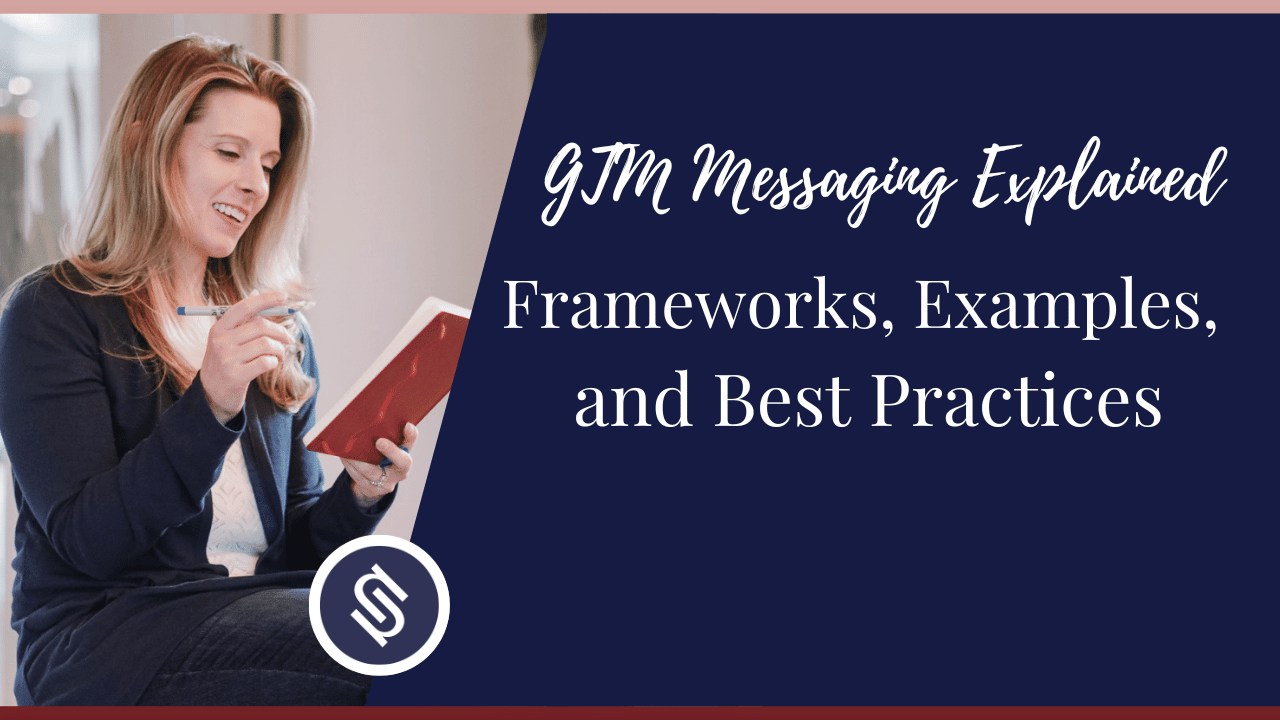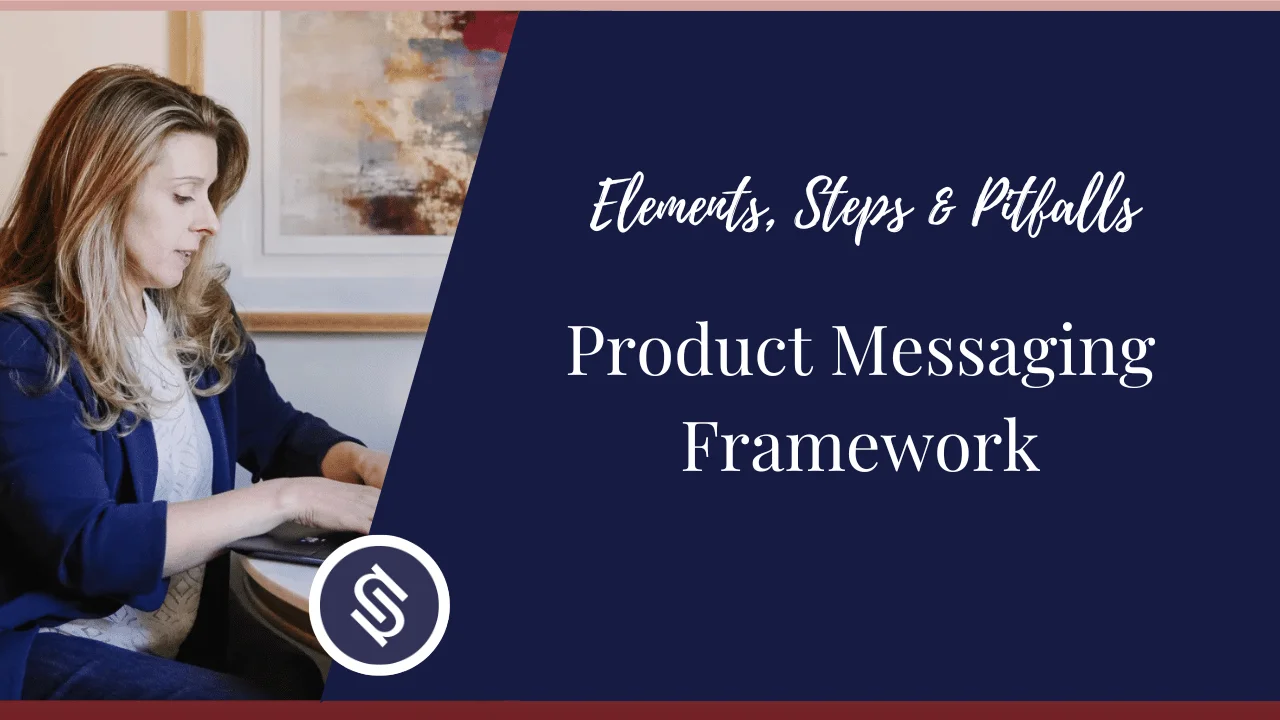Today’s marketplace is more crowded than ever, with over 33 million small businesses in the U.S. alone.
Brands that need to cut through the noise require bold, interesting, and differentiated messaging.
Creative messaging, therefore, becomes a powerful force in marketing campaigns, helping brands pique their audience’s interest and stand out from the crowd.
Our blog guides brands on how to develop creative messaging, the mistakes to avoid, and the steps to build a messaging strategy. We’ve also highlighted brands with effective creative messaging for inspiration.
Let’s get to it.
What is Creative Messaging?
Creative messaging is a marketing tactic that presents a brand’s value in a way that’s unique to your target audience. Its context, needs, ideologies, and expectations.
The easiest way to craft compelling marketing messaging is to partner with a messaging expert like me, Nora Sudduth.
We begin by developing a messaging strategy that serves as the foundation for crafting winning creative messages. We then research your audience and focus on showcasing your offerings in a way that truly resonates with their needs.
Book a discovery call with me today to create creative messages that spark your audience’s attention and drive the intended action.
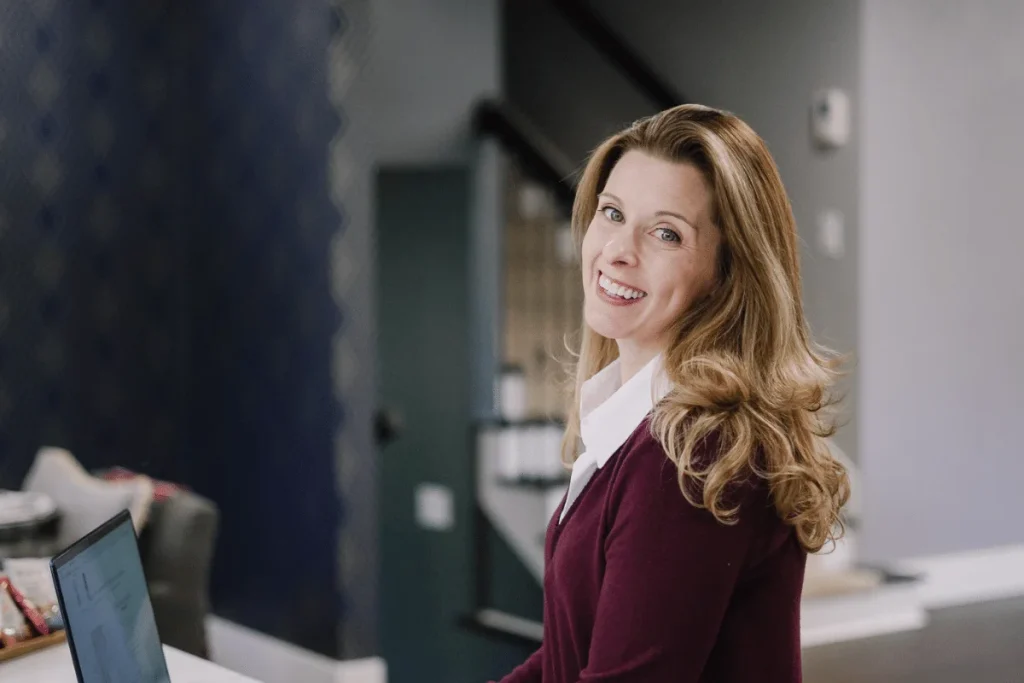
Difference Between Creative Messaging and Positioning
These terms are sometimes used interchangeably, but they actually have distinct meanings. Here’s how positioning vs. messaging compares:
- Positioning: An internal strategy that establishes the market fit. It defines how brands differ from the competition and why they exist. It’s also meant to equip the audience to communicate the brand promise effectively, cohesively, and consistently.
- Messaging: It articulates the brand promise and positioning. It has an external focus, which means it’s designed to be consumed and appreciated by the target audience. Before a business can craft a compelling brand story (brand messaging), it must first define its market position.
Why are Brands Moving Towards Creative Messaging?
Creative messaging in itself has become one of the ways brands differentiate themselves in the crowded marketplace.
Here are other reasons brands are using it:
- It makes a brand feel relatable and human.
- It incorporates humor and storytelling, thus aligning with your target audience.
- It’s conversational and authentic, which activates emotional connections and helps customers make decisions.
However, creative messaging is not a one-size-fits-all, so a brand should start by developing its brand messaging strategy.

Examples of Creative Messaging
Explore three remarkable creative messaging campaigns that have not only captured the attention of audiences but also driven sales:
Dropbox
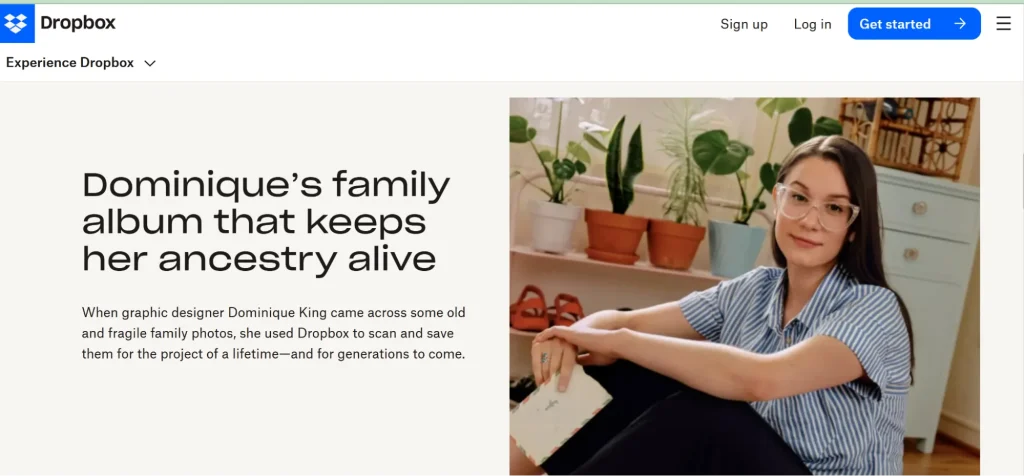
Dropbox launched a sentimental campaign called ‘For All Things Worth Saving.’ It highlighted real users who store their most treasured digital content on Dropbox, including work, memories, and projects.
They used sentimental, emotionally evocative creative messaging that delved into users’ intimate stories of using Dropbox.
Canva
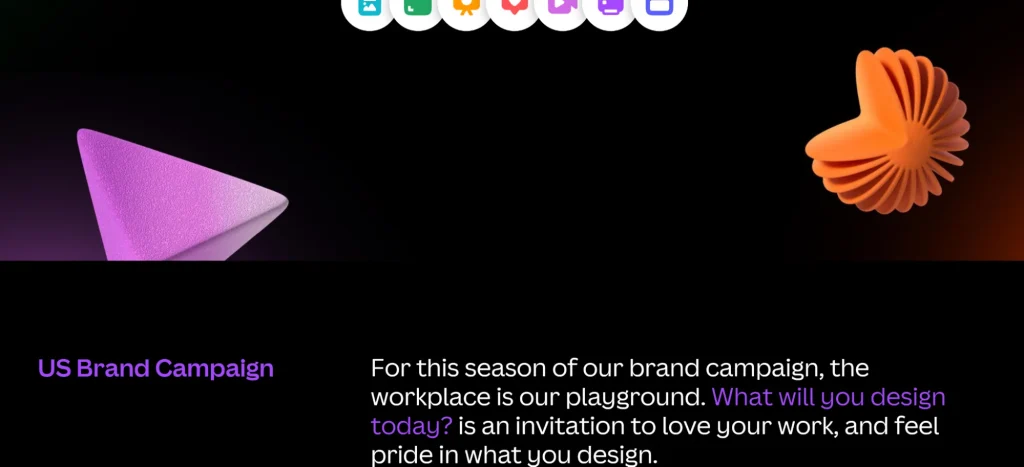
Canva’s messaging has always empowered users to design with ease, solidifying its position as a top design platform for all businesses.
They launched a storytelling campaign that highlighted inspirational stories from their users across diverse industries. They had a tagline, ‘What will you design today?’ and paired it with client success stories.
Airtable
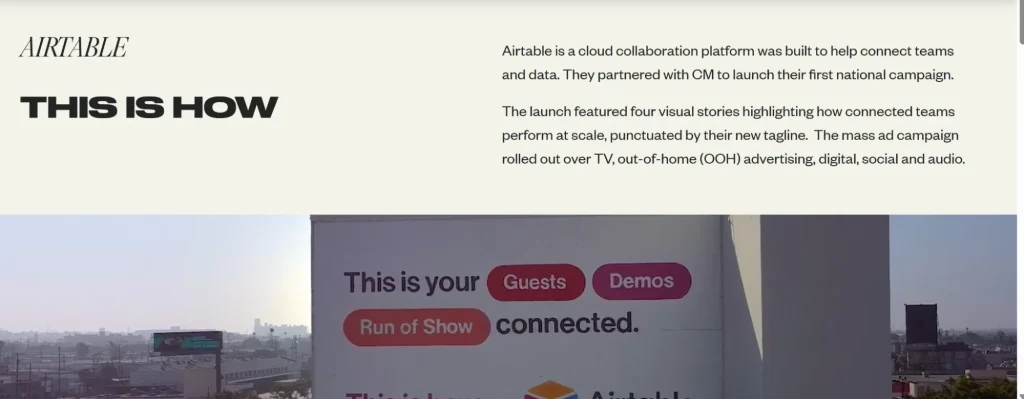
Airtable launched a national campaign dubbed ‘This is How’ to highlight how teams used the platform to collaborate. The campaigns inspired teams to use Airtable creatively, showcasing real-life use cases.
Why Most Marketing Messaging Falls Flat
Building winning creative messages like the ones above requires strategy, continuous monitoring, and optimization.
While there’s no single reason why most marketing messages fail, here are some red flags that brands should take note of to ensure their efforts are on the right track to success:
- Vague Language: If the marketing content uses buzzwords and generic phrasing that don’t evoke the audience’s emotions, they won’t relate to the brand.
- Inconsistency: If the marketing messages keep shifting in terms of voice and style across different formats, whether it’s email, ads, or the website, it dilutes the brand’s identity
- Focusing on Features, Not Benefits: Messages that focus on the product or service instead of how the solution improves the audience’s lives don’t resonate.
- Lack of Social Proof: If a business makes soft claims without providing data, testimonials, or real-world use cases, it fails to build trust with its audience.
- Overloaded Messaging: If a brand attempts to convey every possible benefit, it can overwhelm its audience.

Key Components of an Effective Creative Messaging Strategy
When designing the next marketing campaign, make sure these elements are present in the messaging strategy:
- Objectives: Establish the desired outcome and define the purpose of developing a messaging strategy.
- Value statement: The value statement communicates the why behind a brand. Why does it exist? What value does it provide? Why does the audience need the offerings? Aim to create a brief yet clear and compelling value statement that says exactly what a brand offers.
- Key messages: Drawn from the value statement, key messages are concise statements tailored to each audience segment a brand should reach.
- Brand voice: The brand’s tone, personality, style, language, and even design are dictated by it. Should it be quirky, empathetic, or Informative? Set clear style parameters for how you create content, interact with your audience, and engage at various touchpoints.
- Target audience: Create buyer personas to establish customer demographics, but don’t stop there. Find out what makes them laugh, what they like to share or talk about, and even what they struggle with in their day-to-day life.
- Channels: The platforms brands use to share their messages. Study the audience’s behavior to understand where they congregate, which websites they visit, and even which real-world opportunities (such as conferences and events) work best to engage them.

How to Develop a Creative Message Strategy
Although creating a creative messaging strategy depends on a brand’s goal, here are the common steps it follows:
Define the Brand’s Goals
Set quantifiable, realistic goals. Draw insights from historical data to understand limitations and identify patterns that can be replicated or changed in the campaign.
For example, a startup company has designed a tool that optimizes resumes and helps job seekers secure employment more quickly. The goal is to increase sign-ups by 50% over the next 6 months.
Identify the Audience
Define who the messaging is for. Using our earlier example, the ideal customer profile is a mid-20s job seeker with little to no work experience. Elaborate on the ICP using insights from market research.
Find out information like:
- Economic status
- Challenges
- Social status
- Location
- Goals
Write a Strategy Statement
Next, summarize how to achieve the desired outcome. A clear strategy statement will help direct the execution and focus time and resources on methods that matter right now.
Example: Highlight your brand’s key features, benefits, and customer success stories to build rapport and encourage job seekers to sign up.
Define the Key Messages
Factor in elements such as the audience, value statement, and strategy statement to craft key messages that precisely match what each audience segment needs.
For example, the key messaging could be: Get hired 50% faster by optimizing your resume for the dream job using our AI-powered resume checker.
Test Your Messaging
The messaging will rarely be perfect on the first go. To assess test message reception and performance, run A/B tests or conduct surveys to gain a general understanding of the audience’s preferences and expectations.
Analyze the results to gain insights on how to refine the messaging.

3 Steps to Implement Creative Messaging Across Different Platforms
Around 27% of consumers are frustrated by inconsistent messaging.
Therefore, when launching the message across various platforms, each with its own unique style, brands should strive to maintain their brand identity through these three steps:
1. Choose Platforms that Fit Your Message
It’s easier to stay consistent when using platforms that align with the brand’s message. For example, if a tool is intended for job seekers, such as a brand, it should use a relatable voice that fits a professional landscape.
LinkedIn, Facebook, and eYouTube match that perfectly, ensuring a brand projects a professional persona. On the other hand, TikTok and Snapchat may require you to bend your messaging style so much that it becomes unrecognizable.
2. Pick Key Style Elements
Elements such as design, typography, and even a brand logo will help maintain consistent branding. Choose the ones that suit the message delivery across platforms and stick to them.
For example, a brand can use its logo on all social media posts to help people quickly recognize it wherever they use the platform.
3. Use a Messaging Matrix
Organize your strategy using a messaging matrix to guide consistent message delivery across channels.
Since a matrix is a visual, easy-to-update framework, it’s easy for internal teams to refer to and implement.

How to Evolve Your Messaging As You Grow
The messaging needs to evolve as the market shifts, the audience’s expectations change, the business grows, or the messaging feels outdated.
Evolving the messaging means refining the content while staying true to the brand’s core values.
Here’s how to do it:
Audit the Existing Messaging
Take a close look at the messaging on all the touchpoints, whether it’s the website, social media, or email. Determine if it still resonates with the audience and if it reflects the brand’s current services.
Check which messaging areas feel outdated or misaligned, and adjust the tone and style to reflect the current brand.
Reassess the Brand Core Values
The core values are the foundation of the messaging.
Verify that the brand values remain aligned with the offerings and that the brand cores continue to reflect the business direction.
Understand the Customer’s Current Needs
Research to identify the challenges the audience is facing and the shifts in their priorities. The messaging should address these emerging needs to remain relevant.
Try New Formats
There should also be a change in how a brand delivers its messages.
Adapt the content to market trends, including video storytelling on social media, tailored email campaigns, and interactive content such as quizzes.
Stay Consistent Across Channels
While evolving the messaging, it’s crucial to maintain consistency to build trust.
Use a consistent language or tone across all the brand platforms, from email campaigns to business proposals.

Common Mistakes to Avoid in Creative Messaging
Below is a breakdown of the common mistakes to avoid in creative messaging:
| Common Creative Messaging Mistakes | Why They are a Problem | The Fixes |
|---|---|---|
| Targeting Everyone | Not everyone needs or wants to buy a specific product or service | Instead, target a niche audience that is already seeking the solutions a brand offers. Do this by defining the ideal customer, their pain points, motivations, and buying behaviors |
| Ignoring the Competitors’ Messaging | A brand makes the mistake of believing the business doesn’t have competitors | Research and recognize the messaging the competitors create, and develop content based on that |
| Using Jargon and Buzzwords | essages feel inauthentic and confuse the reader because they don’t know what the brand offers | The creative messages should be clear and speak directly to the audience's pain points and desires |
| Weak, Unclear Call to Action (CTA) | The audience doesn’t know what to do next | Every message should end with a clear action-oriented CTA |
Frequently Asked Questions (FAQs)
Learn more about creative messaging with the following questions:
How Can Creative Messaging Enhance Brand Identity?
Creative messaging communicates your brand promise and value in a way that demands attention and sticks in your audience’s mind.
This fosters better brand recall and helps establish brand identity.
What Role Does Storytelling Play in Creative Messaging?
Storytelling techniques, like “show, don’t tell,” and the use of a narrative or plot make a brand story more memorable.
Since stories make a brand feel more relatable, brands forge deeper connections with their audience by telling a story that humanizes their brand.
How Do Cultural Trends Impact Creative Messaging?
Your messaging should be informed by your audience’s context, such as cultural trends and social issues. Otherwise, it might miss the mark.
Adapting your message for context also makes message delivery more powerful and fosters an emotional connection that gets people to act.
How Can I Use Visuals Effectively in Creative Messaging?
Visual elements, like graphics, colors, and media, reinforce your message. They help audiences understand what you want to say, even if they have just a few seconds or minutes to look at your message.
How Can Companies Innovate Their Creative Messaging Strategies?
Collaboration is one of the main ways brands can push themselves to innovate.
Invite team members, stakeholders, and even customers to share their insights and use them to inform your strategies.
Can I Use Creative Messaging in a High-Ticket Offer?
Yes.
Brands can use creative messaging on their high-ticket offer by creating content that visualizes their clients’ experiences and emotional journeys.
Should Creative Messaging Be Different for Emails vs. Sales Pages?
Yes, creative messaging should differ between emails and sales pages. In emails, the message should be short, emotional, and designed to spark curiosity.
On the other hand, for a sales page, the messaging should be persuasive and confident.
Conclusion
Creative messaging enables brands to craft their content in a refreshing and engaging way, which delights their audience.
However, it helps to have an outside perspective of a messaging expert who can drive the conversation and help you create content that makes your business tick.
We can collaborate to audit your brand, research your competitors’ differentiators, and develop your brand cores. We can craft effective and memorable messaging.
Schedule a discovery call with me, and let’s create creative messages that position your brand as an authority and drive sales.



